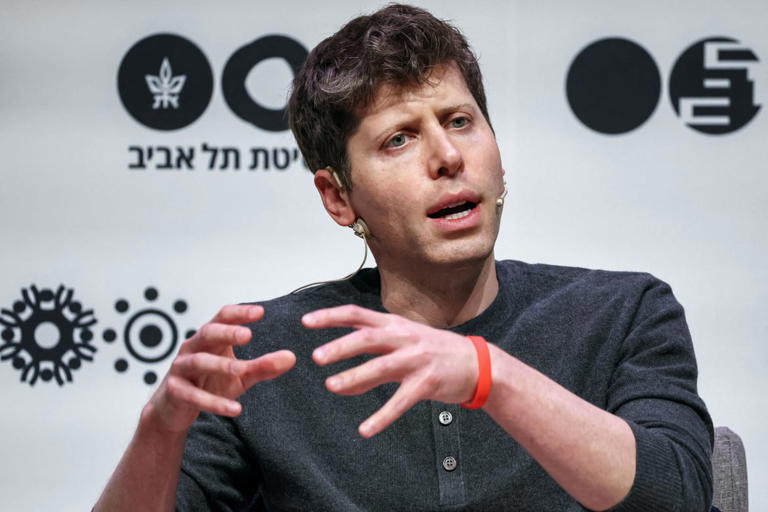Artificial Intelligence (AI) conjures up our worst science fiction fears. In higher education, these fears have led to the predictable Cassandra-like cries that AI will end higher education itself.
Read More:– Logitech Casa Pop-up Desk: the mobile work unit that’s nearly perfect
But the sole focus on institutions and faculty is misguided. We need, instead, to focus attention on our students and mission and ask ourselves how can AI help us better serve them.
I am not advocating a blind neoliberal faith in technology, as Reid Hoffman (a member of the original PayPal mafia and founder of LinkedIn) has. Hoffman said he is “beating the positive drum very loudly” for AI because he sees it filling a need to assist in many routine human activities, like a friendly J.A.R.V.I.S. (Just A Rather Very Intelligent System—Tony Stark’s AI butler in the Iron Man movies.)
Nor am I suggesting those calling for a pause in AI expansion are over-worried.
But, besides being a topic of study, institutions of higher learning need to grapple with the question, how should we as educators interact with AI?
Higher education is a loose assortment of 5,000 independent institutions serving various sectors (private, public, regional, national, and for-profit) with varying financial resources and missions. Therefore, individual institutions will have to plow this field on their own.
This gives universities some agency, but it also means each one shoulders the risk and reward alone.
In thinking about how AI will transform higher education, I did what we do now: I had a “conversation” with ChatGPT4 and asked it some questions.
ChatGPT4 told me, “By using advanced algorithms and machine learning, it can analyze a student’s strengths, weaknesses, and learning preferences.”
Read More:- Your daily horoscope for Aug. 17, according to ChatGPT
“Based on these insights, AI could tailor a curriculum that suits the individual student’s needs, optimizing their learning potential. Each student will have a bespoke learning plan, eliminating the one-size-fits-all approach that often underpins traditional higher education.” It can also radically transform feedback and grading, CHATGPT4 added, “AI-driven learning platforms that can provide real-time feedback to students” can provide instant feedback. Also, “AI tutors, available 24/7, can provide individualized instruction and feedback, making quality education accessible to anyone with an internet connection.”
AI can, of course, provide faster feedback and customized learning opportunities, which could benefit students. But it reveals that AI “thinks” of education as transactional, mere content accumulation.

What AI-driven education misses is how education, at its core, is a human activity. It is transformational, not transactional. It is about character formation and human development, emotion, and connection.
AI can be a useful tool, but it’s not a substitute for good teaching.
Read More:- Your Daily Work Horoscope for August 18, 2023
We have all had great teachers in our lives. And I bet what made them great was not the efficiency of knowledge transfer. It was, more likely, their ability to connect and inspire. It was how they made you think deeply, reflect fully, joined you to a community of learners, and made you deal with the complexity of life.
Instead, AI sees education as individual and unrelated to space, time, or groups. It does not meet students’ needs as whole people.
As we all learned the hard way during COVID, isolation damages students and the best learning happens in groups (ideally, small, engaged groups). We owe students this community experience, this nurturing space, and not an education where they are tied to screens and isolated from the world.
AI can do things faster, but can it help students live more meaningful lives? Can it answer the poet Mary Oliver’s powerful question: “Tell me, what is it you plan to do with your one wild and powerful life?”
This spring, the higher education world was ablaze with discussions of ChatGPT being weaponized for cheating. The cries to turn it off and catch its every use were loud. This approach sees AI as an intruder, something to protect against and resist. It also sees learning as fragile and needing protection from the realities of the world. It seeks to preserve rather than expand. Technology is not an intruder, it is a reality. And learning is not as fragile as we suspect.
When I was a new assistant professor, an older faculty member asked me one day how to turn off the internet. He wanted to restrict his students’ use of it, trying to preserve his way of doing things.
Read More:- Today’s horoscope: Free daily horoscope for Wednesday, August 16, 2023
What I learned living and teaching through that transition was the importance of centering teaching on the students above my comfort with new technology. My goal was to find a way that worked for the students in front of me, not to lock my pedagogy in amber. I learned that it is ok to experiment and find ways to have technology inform and animate teaching.
I tried to turn what he saw as a negative into a positive. And so you do not think this was a generational issue, the person who showed me how to do this was actually older than me, closer to the other professor’s age. He recognized what I had before I had.
Too many in higher education see only the negatives associated with AI. And we are right to be cautious and to develop new strategies and policies to handle academic dishonesty in this new world. But focusing only on restrictions provides a disservice to our students.
If this is our world, we owe it to them to find a way to give them a reason to see value in transformational education over the transactional. We need to study and experiment with each new technology.
So, how will we engage with AI?
Every institution of learning will be forced to grapple with AI. Sadly, some institutions will adapt, embrace, and augment learning through AI, reinforcing the transformational mission of education. But a substantial number will be forced to shift to a model where much of the instruction and academic support is done through AI as a simple economic decision based on instructional cost (the largest percentage of higher education expenses are for people, faculty, and staff).
Read More:– Snapchat’s MyAI Gone Rogue: Mysterious Stories Leave Users Alarmed And Puzzled
This is why so many institutions rely on adjunct instructors for upwards of 70 percent of instruction. AI, for these institutions, could lead to a system of learning factories where students are remote, there are few faculty, and instruction is through AI, with success based on some set of AI-graded assessments. This is the definition of a diploma mill, not a system of learning and formation.
Those in more privileged situations must find common cause with those who are not to advocate for better outcomes for all college students. If we shirk this responsibility, we accept the two-tier education system we will surely get.
As academics and scholar-teachers, we have always reinvented our disciplines, methodologies, and pedagogies with each new era. We must lean on this practice and study AI deeply and through a multidisciplinary approach. We must develop hypotheses and experiments, finding its values and flaws.
In short, we must not run in fear, but run towards the new to interrogate it closely and adapt.
We need to teach our students to do the same. We must rethink how we design assignments and teach in the age of AI. Technology should never stand between the student and the teacher. We should never shut out the world and create cloistered classrooms.
Having taught for 25 years, there is nothing like being in a room of smart students, most often in their 20s, discussing important topics and watching them think through issues and develop their own conclusions. Our job is to curate experiences and knowledge, not just feed them information. And we need to equip them with the skills that will serve them well in the world they inhabit, warts and all.
We now have one more tool in our toolbox. This can either scare or excite. I am leaning into the excited camps and hoping the singularity does not come for us all.































